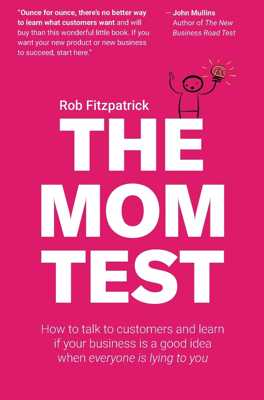Finding Conversations
This chapter explores various strategies for initiating conversation with potential customers, crucial for obtaining insights needed to refine business ideas. Fitzpatrick emphasizes the necessity of engaging potential customers through both designed encounters and serendipitous meetings, discussing techniques for each scenario.
Cold Conversations and Seizing Serendipity
Starting with cold conversations through emails or calls can be challenging due to high rejection rates. However, these rejections are generally less about the business idea and more about people's aversion to cold calls. The key is to convert a small percentage of contacts into meaningful conversations, using each initial discussion as a stepping stone to warmer introductions and more fruitful dialogues.
Fitzpatrick also highlights the importance of seizing serendipitous opportunities to engage potential customers. He advises approaching these interactions as casual conversations about the customer's pain points and experiences rather than formal interviews, which makes the interactions more natural and enjoyable for both parties.
Strategies for Engaging Potential Customers
Fitzpatrick suggests various strategies for engaging potential customers:
Visiting Conferences and Events: Positioning oneself in environments rich with potential customers, such as industry conferences or meetups, can provide numerous opportunities to initiate casual yet insightful conversations.
Organizing Events: By organizing meetups or seminars, one can naturally attract individuals interested in the topic and facilitate conversational settings that position the organizer as a central figure, enhancing credibility.
Teaching and Speaking: Delivering talks and conducting workshops not only establishes expertise but also attracts an audience that is inherently interested in the topic, providing a captive audience for further engagement.
Industry Blogging: Maintaining a blog can attract readers interested in specific topics, making it easier to initiate contact. Even without a large audience, a well-maintained blog can lend credibility and stimulate interest from potential customers.
Innovative Engagements: Fitzpatrick appreciates creative approaches, such as organizing knowledge exchange calls or webinars that position the host as a credible authority in the field while simultaneously gathering valuable industry insights.
Leveraging Warm Introductions
Fitzpatrick stresses the superiority of warm introductions over cold contacts. Warm introductions often come with a pre-established level of trust and credibility, making these conversations more constructive. Tactics to obtain warm introductions include:
Leveraging Existing Connections: Asking acquaintances or industry contacts for introductions can significantly streamline the communication process.
Utilizing Advisors: Engaging industry advisors who can provide intros to other industry players is an effective way to expand one's network and credibility swiftly.
Engagement through Universities and Investors: Universities and investors have networks that can be invaluable for acquiring introductions to potential customers or partners, particularly in niche or highly specialized fields.
Effective Meeting Set-Up and Execution
When a formal meeting is unavoidable, Fitzpatrick advises setting it up clearly and concisely:
- Describing the vision and current status of the endeavor.
- Indicating that nothing is being sold at this stage.
- Expressing the particular challenges faced and how the individual's insight could be beneficial.
- Elevating the status of the individual by acknowledging their specific expertise.
- Clearly requesting their assistance.
This structured approach ensures clarity and illustrates respect for the individual's time, increasing the likelihood that they will be willing to engage constructively.
Throughout the chapter, Fitzpatrick emphasizes the importance of making each interaction meaningful and transformational in gathering customer insights and advancing the business idea, encouraging entrepreneurs to be proactive, thoughtful, and strategic in their approach to customer conversations.
